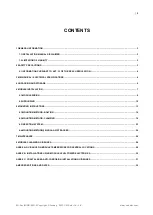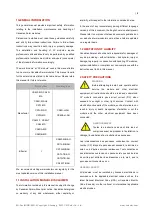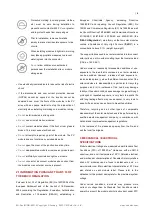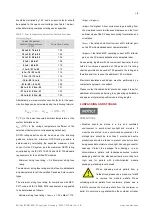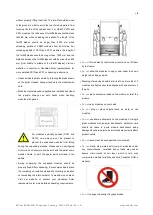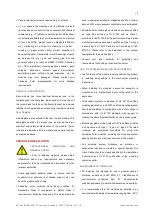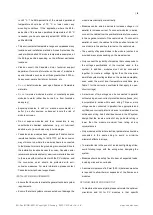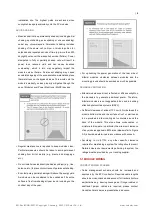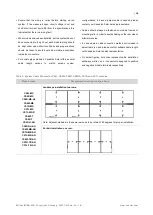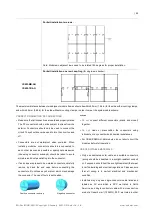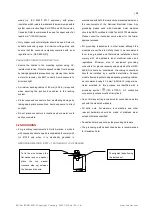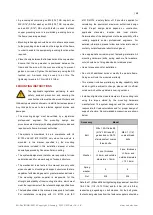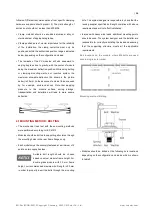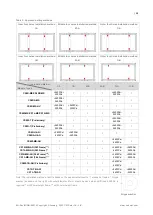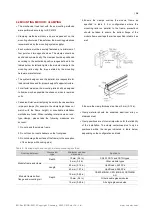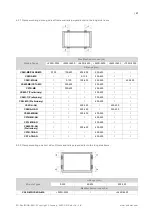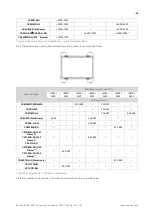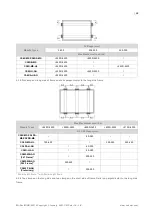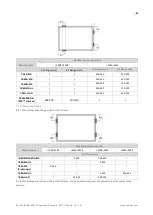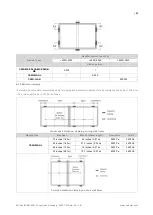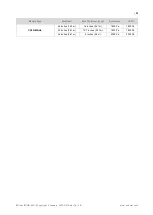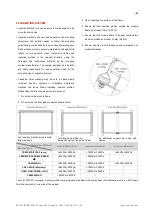
| 8
EN-Rev IM/GN-EN/1.0 Copyright © January, 2023. CSI Solar Co., Ltd.
to +40 °C. The 98th-percentile of the module operational
temperature should be of 70 °C or lower under any
mounting conditions.
If the application where the 98th-
percentile of the module operational temperature of 80 °C
is needed, you have to specially select IEC 63126 Level 1
certified BOMs.
This environmental temperature range encompasses many
locations and installation methods. Annex A provides the
reader with modelled PV module temperature examples, at
the 98th-percentile depending on the different worldwide
locations.
Please consult the Canadian Solar technical support
department for more information on the use of modules in
special climates, such as an altitude greater than 2000 m,
heavy snow, severe hail storm, hurricane, etc.
Do not
install modules near open flames or flammable
materials.
Do not
immerse modules in water or constantly expose
modules to water (either fresh or salt, i.e. from fountains,
sea spray).
Exposing modules to salt (i.e. marine environments) or
sulfur (i.e. sulfur sources, volcanoes) incurs the risk of
module corrosion.
Do not expose modules and their connectors to any
unauthorized chemical substances (e.g. oil, lubricant,
pesticide, etc.), as modules may incur damages.
Canadian solar modules have passed salt mist corrosion
resistance test according to IEC 61701, but the corrosion
may still occur on where the modules frame is connected
to the bracket or where the grounding is connected. Should
the installation location be near the ocean, Canadian solar
recommends stainless steel or aluminum materials be used
in the areas with direct contact with the PV modules, and
the connection point should be protected with anti-
corrosion measures. For more information, please contact
Canadian solar technical support team.
INSTALLATION REQUIREMENTS
Ensure that the module meets the general technical system
requirements.
Ensure that other systems components do not damage the
module mechanically or electrically.
Modules can be wired in series to increase voltage or in
parallel to increase current. To connect modules in series,
connect the cables from the positive terminal of one
module
to the negative terminal of the next module. To connect in
parallel, connect the cables from the positive terminal of
one module to the positive terminal on the next module.
The quantity of bypass diodes in the module junction box
provided may vary depending on the model series.
Only connect the quantity of modules that corresponds to
the voltage specifications of the inverters used in the
system. In addition, modules must not be connected
together to create a voltage higher than the maximum
permitted system voltage stated on the module nameplate,
even under the worst local temperature conditions (see
Table 1 for the correction coefficients that apply to open-
circuit voltage).
A maximum of two strings can be connected in parallel
without using an over-current protection device (fuses, etc.)
incorporated in series within each string. Three or more
strings can be connected in parallel if an appropriate and
certified over-current protection device is installed in series
within each string. And it shall be ensured in the PV system
design that the reverse current of any particular string is
lower than the module maximum fuse rating at any
circumstances.
Only modules with similar electrical parameters should be
connected in the same string to avoid or minimize
mismatch effects in arrays.
To minimize risk in the event of an indirect lightning strike,
avoid forming loops with the wiring when designing the
system.
Modules should be safely fixed to bear all expected loads,
including wind and snow loads.
A minimum clearance of 6.5 mm (0.25 in) between modules
is required to allow thermal expansion of the frames and
modules.
OPTIMUM ORIENTATION AND TILT
To maximize the annual yield, please calculate the optimum
orientation and tilt for PV modules in that specific


